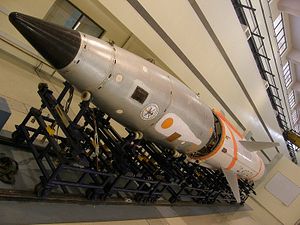India will conduct its first long-range missile defense test next week, according to the head of its military technology agency.
Avinash Chander, Director General of India’s Defense Research and Development Organization (DRDO), told reporters over the weekend that Delhi will test its anti-ballistic missile defense system beyond 100 km from Wheeler Island off the Odisha coast. The Times of India noted that India has previously tested its anti-ballistic missile system six times, but only from ranges of between 20 and 30 km. Most notably, in November 2012, India simultaneously shot down two separate missiles.
“It is a system to intercept enemy missiles with a range of 2,000 km. The missiles will get intercepted at range of more than 100 km away so that damage to our cities can be prevented,” Chander was quoted as saying by The Times of India.
The report went on to explain that the test would start with an Indian Navy vessel launching a missile that would mimic the enemy weapon. In an automated process, the ballistic missile defense system would shoot its interceptor, destroying the fake enemy missile midair.
In the weeks following the test, DRDO plans to test two emerging missiles in its arsenal. The first is the Nirbhay, a long-range, surface-to-surface sub-sonic missile with a range of about 1,000 km. The Nirbhay is often compared to the U.S. Tomahawk. It can carry multiple warheads and engage several targets, a DRDO official told The Hindu back in 2012.
“Even if there are multiple targets, it can pick out a target and attack it. It is a loitering missile; it can go round and round a target, perform several maneuvers and take it apart. It has precision, endurance and accuracy. It is an important missile,” The Hindu quoted the DRDO official as saying.
The Nirbhay’s maiden test flight took place in March of 2013 and failed. DRDO later said the failure had to do with issues with the missile’s inertial guidance system. Chander had previously promised the second test flight of the missile—which will initially be employed by India’s Navy—would take place sometime in February of this year. The missile has been plagued by other various delays as well. As Chander explained it to reporters earlier this year: “Nirbhay is a typical model of how we should not do project R&D. Earlier it was piecemeal work, but new thrust has been provided to this project.” Over the weekend Chander said that the second test flight of the missile will take place early next month.
Chander also said that DRDO will conduct the first test of its new Astra missile around the same time. The Astra is a beyond visual range air-to-air single stage, solid-fueled missile. It will be tested from one of India’s Russian-made Su-30 aircraft. According to The Times of India report: “If Astra is successfully fired, India will break into [an] elite group of nations, including the U.S., France, Russia and Israel, possessing such missiles. The missiles are capable of engaging ultra-modern supersonic fighter jets. Astra can carry a 15-kg high-explosive warhead.”
For a more in-depth look at India’s ballistic missile defense system—including its history—see Frank O’ Donnell and Yogesh Joshi’s piece in The Diplomat from last August.
































